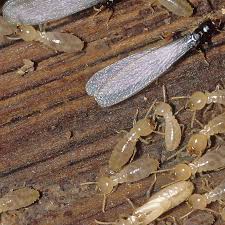Examine This Report on Termite Control Without Chemicals
Since the approaches, their costs and efficiency changes depending on the species. You can learn more about the termite types above.Subterranean Termites DIY Treatment Methods1 ) Chemical ExterminationLiquid Termiticides, if implemented properly can be effective in treating Subterranean termites. Application of such compounds can block the passage of termites in to your home, and restrict access to dirt for termites in your home they need for moisture.But just a word of warning; their application is not feasible for everyone depending on the house. Application of these liquid termiticides in the soil can often require drilling of timber and concrete slabs.
If even a tiny little distance is not properly coated then anticipate some unwanted traffic to your home soon. Keep in mind, termites are really small insects. And there colonies can travel through a distance as wide as a pencil.An typical termiticide treatment can last from 5-8 years. It can take around 20 oz of dilute termidor to treat 60 linear feet of space.
Unknown Facts About Termite Control Without Chemicals
These baiting systems work more efficiently when the termite colonies feed on the bait as a significant food source. Think about it as a virus. Once an infected termite gets in contact with others, it multiplies its victims extensively.How do Termite Baits workTermite baits consists of cardboard, wood or any other okay termite-food poisoned having a chemical lethal to termites.
This is essential for two reasons; one being that we want the information of new food-source handed to other termites. Second, the transmission of poison would impact a much larger target, even the ones that never fed on the bait. A fantastic termite bait system can cost you around $500. Drywood Termites DIY Treatment:Drywood termites make their colonies in wood structures, unlike subterranean termites.

The purpose here is to make sure that the toxic material is in touch of termites. You can tell youve reached the termite gallery when you need to apply less pressure whilst drilling.Dampwood Termites DIY TreatmentDampwood termites are largest in size, and reside in rotten structures which have high moisture conditions.
Unknown Facts About Termite Control With Imidacloprid
And the majority of the times their presence indicates an unusual source of moisture. These can be plumbing defaults, insufficient ventilation, poor drains or construction made in a means that gives too much contact with dirt. The best practice to remove dampwood termites in your home is to identify and remove the moisture resources that are necessary to get dampwood termite survival.Frequently Asked Questiondo termites flyNot all termites can fly, but termite colonies can create flying termites during a termite swarm. A termite swarm is the season when well-built termite colonies replicate to make new termite colonies.
Nature provides the new-born termites wings, which means that they might fly and find themselves a new home. When termites find a new residence and mate with their partners. The wings shed off.Flying-termites are normally confused with flying-ants. You can tell the difference by carefully examining their bodily appearance. Termite wings are of equivalent size while ants have unequal wings. And ant antennae bend 90 degrees while termite antennae are straight.where do termites liveTermites have many kinds.
Subterranean termites, being the most common live in the land. The produce mud-tubes to travel to food sources.On other hand, drywood termites like to live in the timber, theyre feasting on. These can include your furniture, wooden-house constructions, cardboards or any thing that suits their hunger for cellulose.The next kind is dampwood termites.
Dampwood termites are a lot bigger in size in comparison to other termites. They need a lot of moisture to live, more than an average home provides. That is why there colonies are hardly found inside homes.how long termites liveTermites are demanding insects, considering their colonies become attacked by predators and fungi.
The Of Termite Control Without Chemicals
The Queen in a colony, accomplishes the longest life. Since, everyone in it shields the queen. Studies have found a termite queen can live up to 20 years.Whereas the soldiers and employees are not that lucky. Both normally live as many as two decades. When required the whole colony puts their own life at stake for the queen. The termites rescue the Queen and the Queen conserves the colony.